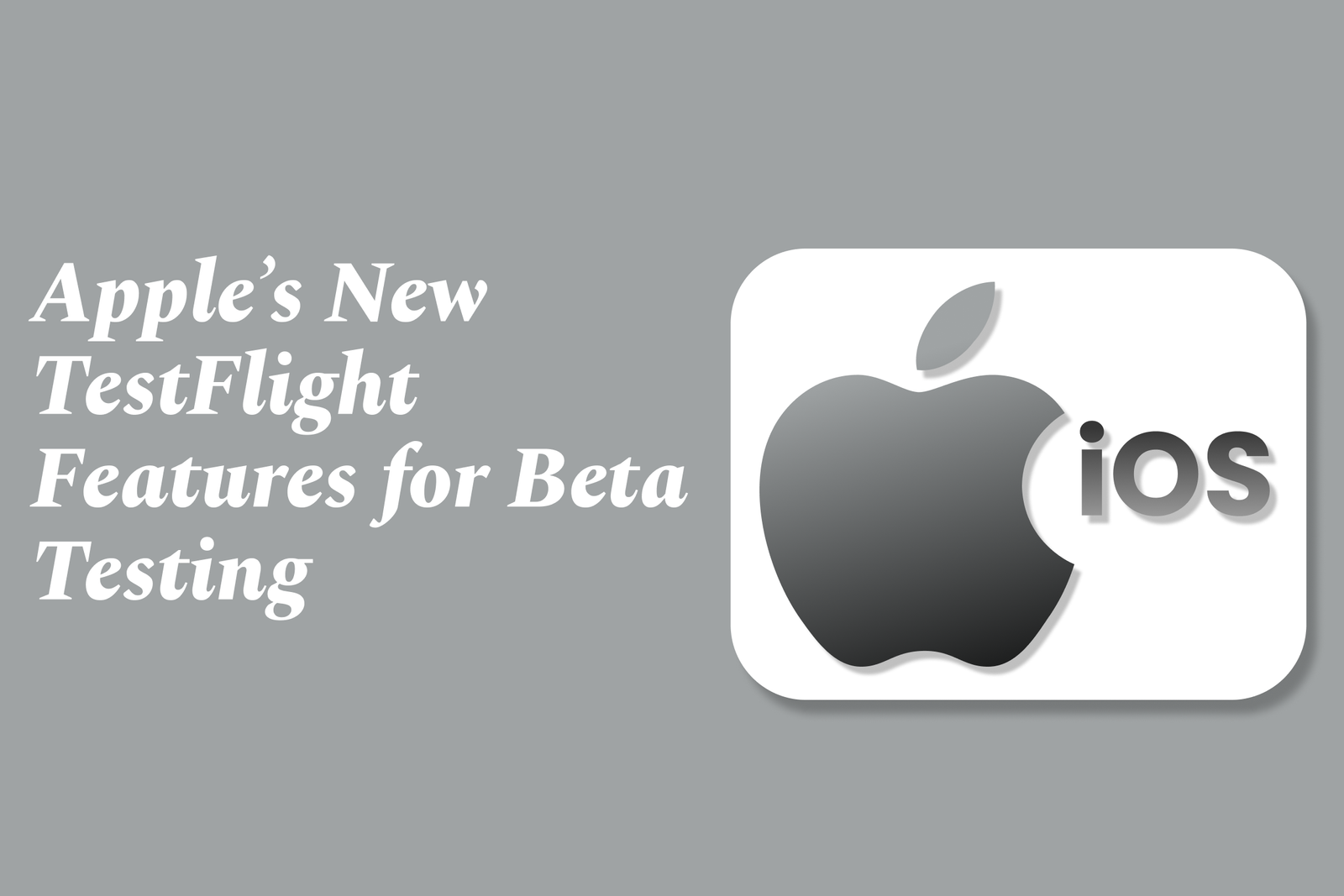Apple?S New TestFlight Features For Beta Testing
Apple’s new TestFlight features simplify beta testing across all Apple devices, enabling developers to easily distribute apps, games, and App Clips to testers without complex setup, supporting automatic updates, device requirements, and broad language options for seamless testing.
Apple’s New TestFlight Features for Beta Testing
1 ) Simplified Beta Testing Across Apple Platforms
Apple has enhanced TestFlight to streamline the beta testing process for apps, games, and App Clips across all Apple platforms, including iPhone, iPad, Mac, Apple TV, Apple Vision Pro, Apple Watch, and iMessage. This allows developers to share their beta versions easily either privately with their teams or publicly.
2 ) Getting Started with TestFlight
Developers can initiate beta testing by accessing the Apps section in App Store Connect, selecting the app or App Clip, and navigating to the TestFlight tab. Here, they enter test details for testers, upload up to 100 beta builds, and invite both internal and external testers. Required beta app descriptions and review information must be provided to share builds externally.
3 ) Effortless Tester Management
TestFlight removes the need for handling UDIDs or provisioning profiles. Testers install the TestFlight app on their devices, receive invites with detailed beta app descriptions highlighting new features, and can easily install beta versions. Developers can specify tester requirements, such as preferred device or operating system.
4 ) Supported Devices and OS Requirements
iOS/iPadOS apps require devices running iOS 14/iPadOS 14 or later.
macOS apps need macOS 12 or later.
tvOS apps require tvOS 14 or later.
visionOS apps require Apple Vision Pro with visionOS 1 or later.
watchOS apps require watchOS 6 or later.
Developers can enforce device and OS criteria for testers to ensure compatibility.
5 ) Testing Period and Automatic Updates
Each beta build remains testable for up to 90 days from upload. Testers receive notifications for new builds and instructions. Since TestFlight 3, automatic updates can be enabled for testers to receive the latest builds seamlessly.
6 ) In App Purchases and Content Management
In app purchases during beta testing are free but do not carry over to the App Store version of the app. Apple also supports automatic downloading of Apple Hosted Background Assets and Managed Background Assets for beta apps on devices with required OS versions, enhancing content delivery during testing.
7 ) Wide Language Support
TestFlight supports extensive languages across platforms, including Arabic, Chinese (Simplified and Traditional), English (various regions), French, German, Japanese, Korean, Spanish, and others, ensuring global accessibility for beta testers.
Overall, Apple’s updates to TestFlight make beta testing more flexible, manageable, and integrated across their ecosystem, aiding developers in refining their apps through robust real world testing before release.
https://justacademy.in/news-detail/android-quick-settings-customization
https://justacademy.in/news-detail/react-native-expo-go-app:-what?s-new-in-2025
https://justacademy.in/news-detail/react-native?s-cloud-integration-features-in-2025
https://justacademy.in/news-detail/flutter-ux-design-tips-in-2025
https://justacademy.in/news-detail/react-native's-latest-improvements-to-battery-efficiency
Related Posts
Java supports GDPR and data privacy by enabling secure data handling through encryption, controlled access, and precise data management. It allows developers to minimize PII exposure, ensure data confidentiality, and design workflows that comply with data protection regulations effectively.
Java code quality tools have evolved to include advanced static analysis, integrated security checks, and AI-powered code reviews. These updates help developers detect bugs, enforce coding standards, and enhance security, streamlining the development process and improving overall code reliability.
Java remains a cornerstone in big tech companies, evolving with modern features like records, pattern matching, and virtual threads. Its robust ecosystem, enhanced performance, and growing AI integrations keep it vital for both legacy systems and innovative new projects.
Java and CI/CD pipeline optimizations streamline Java application development by automating builds, tests, and deployments. They improve efficiency through parallelization, caching, and secure secrets management, enabling faster feedback loops and more reliable, scalable software delivery.
Java supports modern cryptography standards through its flexible Java Cryptography Architecture (JCA), enabling integration of advanced algorithms like AES, EdDSA, and post-quantum tools. Libraries like Bouncy Castle offer FIPS-certified, hardware-accelerated implementations for secure development.
Java 23 enhances record patterns by enabling concise, direct destructuring of record components within pattern matching, simplifying type checks and data extraction. This improvement boosts code readability and expressiveness by reducing boilerplate in handling immutable data classes.
Java remains a top choice for mobile app backends, powering scalable, secure, and high-performance server-side solutions. Latest trends include cloud-native microservices, reactive programming, and enhanced JVM optimizations, enabling efficient, flexible, and robust mobile backend development.
Java SE 24 and LTS Java SE 21 offer enhanced features and performance, while Apache Spark 4.0.0 introduces Scala 2.13 support and advanced ML and SQL capabilities. Together, they empower developers to build scalable, high-performance data applications with modern tools.
JUnit 5 modernizes Java testing with a modular architecture, improved assertions, and seamless Java 8+ support. Beyond JUnit, tools like Mockito and AssertJ enhance mocking and assertions, creating a powerful, flexible ecosystem for writing clean, efficient Java unit tests.
Java plays a pivotal role in cloud automation tools by providing a robust, platform-independent language used to build scalable automation frameworks like Jenkins and Selenium, enabling efficient CI/CD pipelines, testing, and orchestration across diverse cloud environments.










